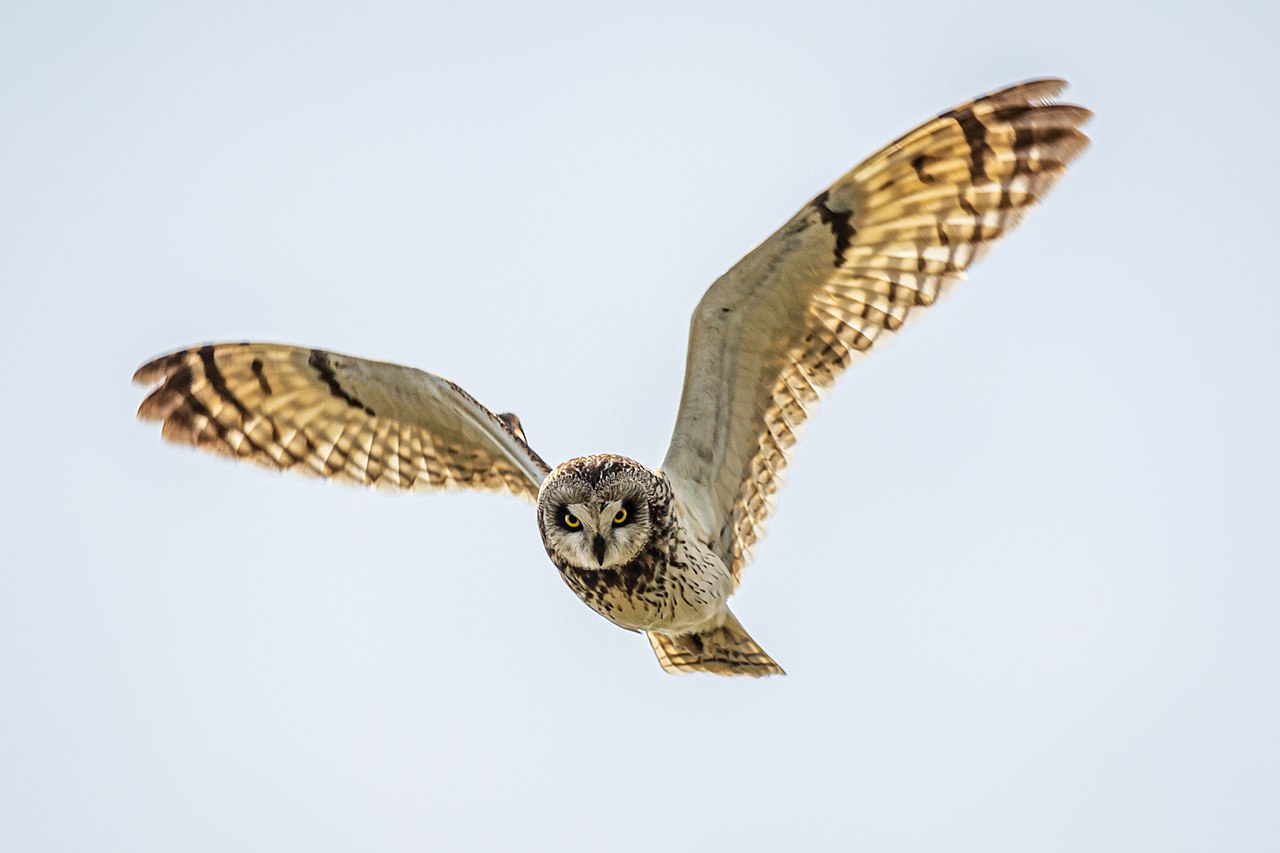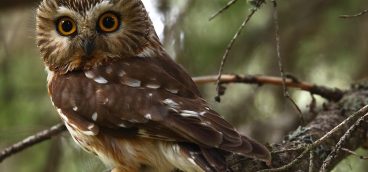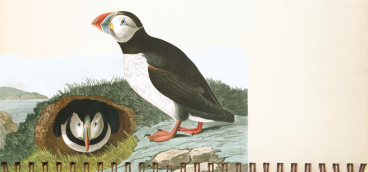
I do not recommend birding while driving. Looking up into the sky to determine whether the soaring shape high above is an eagle or just a turkey vulture is generally unsafe. True, I have never veered off the road or crossed into oncoming traffic, but I could have. Hurtling down the highway, I’ve seen red-tailed hawks stalking prey from lampposts or grabbing a meal in the median, tilt-winged turkey vultures riding thermals, and starlings in whirling murmurations that inspired awe on a winter’s day. En route back to Pittsburgh, I thought I saw an eagle perching alongside the Susquehanna River until my eagle-eyed spouse instead identified a white plastic bag lodged in a branch. I’ve been living that down ever since.
So I was cautious as we traversed the Pennsylvania Turnpike to identify what appeared to be a giant fluttering moth, dark on top, light underneath, some 30 or 40 feet above a stubbly farm field. I had never seen such a bird, and at first, I couldn’t place it. But then I remembered reading about the short-eared owl.
The pharaoh bird, with yellow eyes surrounded by dark feathers, reminded me of the Middle Eastern practice of using kohl, a black ointment, to make the eyes look larger and more intense. The owl’s facial disk, the halo of feathers that funnel sound like a radar dish to bilateral ear holes, is typically gray, brown, and white like the bird’s body plumage. Using sound to triangulate small mammals, the short-eared owl really has no external ears at all, just small feather tufts rarely seen. Short-eared owls vocalize in quick hoots, but they can make a wide range of sounds from whines to high barks to wing claps to bill clacks. Even with those options, they’re mostly quiet listeners and watchers.
A bird of open grasslands, the species is cosmopolitan, found around the globe, particularly in the Northern Hemisphere. Wintering and breeding ranges can overlap, so spotting one year-round is a possibility. In winter, the crepuscular hour is their mealtime; short-eareds take mice and voles in their talons before decapitating and downing them, their culinary preference. Sometimes in winter these owls roost together in trees. During the spring breeding season, they’re active in both daylight and darkness, hovering, swooping, and soaring. Female short-eared owls scrape a bowl in the earth and line it with grasses before laying as many as 11 eggs, which they incubate for three to five weeks. Young owlets grow quickly, fledging after just about two weeks.
These days, I’m less likely to see a short-eared owl at 65 miles per hour and more likely to use eBird to see where they’re turning up. If you haven’t tried eBird.org, visit the website, where you can learn more about this species and track their appearances. Web surfing is certainly safer than birding at high speed!
Email your avian encounters, photos, or questions to PQonthewing@gmail.com.









